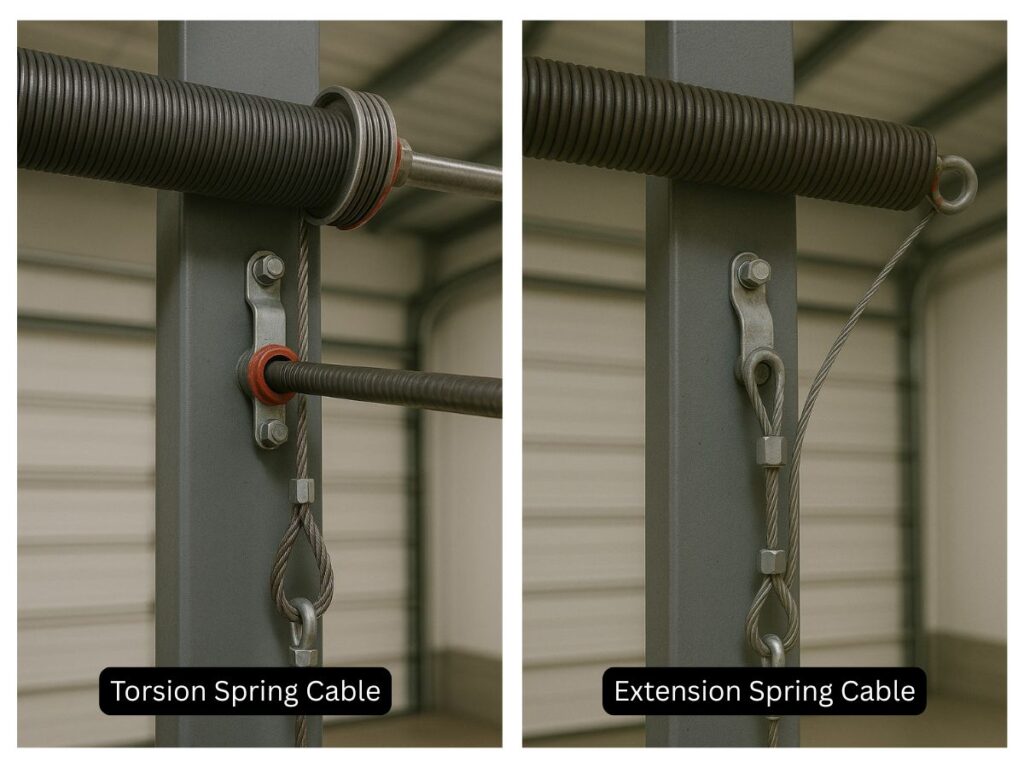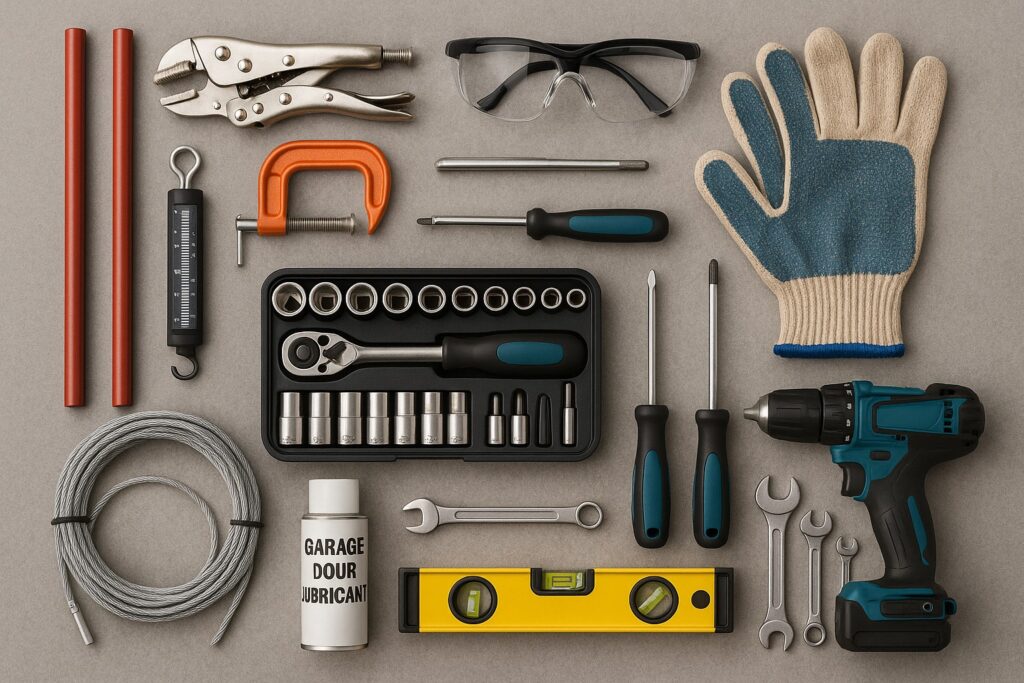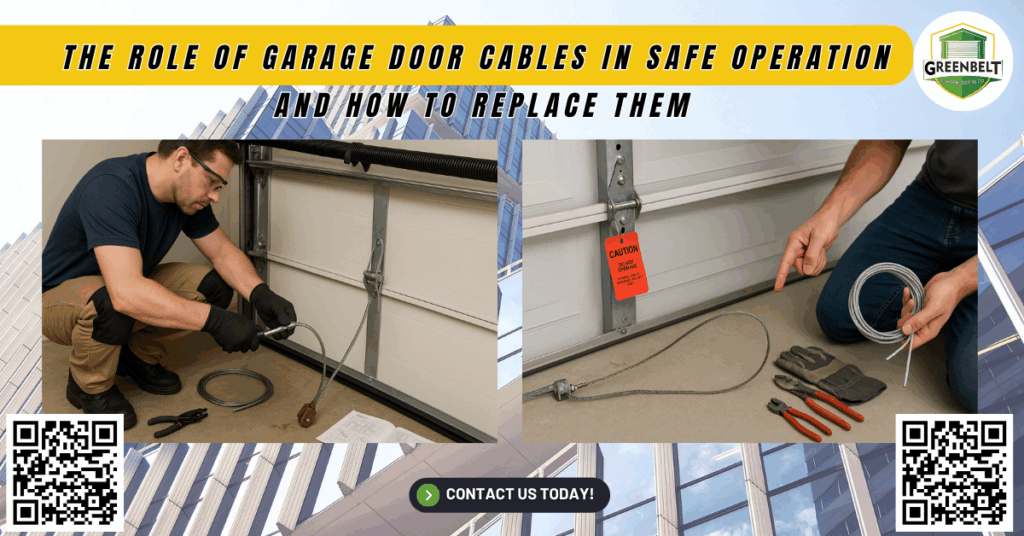Garage doors are one of the most used entry points in modern homes, and they rely on a surprisingly complex system to function properly. While many homeowners focus on the visible parts, like the door panels or the garage door opener, the real unsung heroes are the garage door cables. These steel cables are crucial for smooth operation, safety, and preventing sudden damage to your home or injury to your family. This article explores the role of garage door cables in safe operation and provides a comprehensive step-by-step guide to garage door cable replacement.
A Real Story from Garland, TX
A local family in Garland, TX, recently called Greenbelt Garage Doors Co. after their garage door suddenly tilted and wouldn’t open properly. One of the door cables had completely snapped, leaving the garage door opener unable to lift the heavy door. Our technician arrived, inspected the system, and found that not only were the cables worn, but the torsion springs had lost significant tension. This situation could have turned dangerous quickly. Thankfully, the issue was resolved safely and efficiently with professional help, but it highlights just how important these often-overlooked components are.
This type of incident is more common than many homeowners realize. With daily usage and little attention given to routine maintenance, garage door systems can quietly deteriorate over time. The result is a system that works until it suddenly doesn’t, often with dramatic and costly consequences.
Startling Statistics
According to the U.S. Consumer Product Safety Commission, over 20,000 garage door-related injuries occur annually. Many of these incidents involve broken springs, frayed cables, or improper DIY repairs. Garage door cables are under high tension and are essential to the entire garage door system. When these parts fail, the consequences can include severe injuries, property damage, and expensive repairs.
Most of these injuries happen due to sudden drops, pinched fingers, or cables snapping during manual or automatic operation. A properly maintained garage door system, which includes timely garage door cable replacement, dramatically reduces the risk of such occurrences.
Don’t Ignore the Signs
Cables wear out over time, especially without routine maintenance. Homeowners often ignore early signs like fraying, jerky door movement, or strange noises during operation. Recognizing these symptoms early and acting quickly with a proper garage door cable replacement can save you money, prevent further damage, and most importantly, ensure the safety of your loved ones.
Other signs include visible rust, kinks, or frayed ends, which indicate the steel cable’s integrity is compromised. Neglecting these signs could lead to one side of the door being unsupported, which might result in track warping, excessive wear on the garage door opener, and even structural damage to your garage framing.
What Are Garage Door Cables?
Garage door cables are high-strength steel wires that are part of the counterbalance system, working alongside the garage door springs (either torsion or extension springs) to safely raise and lower the garage doors. These cables connect to the bottom bracket at the base of the door and wind around a cable drum as the door moves.
There are typically two types of cables:
- Torsion spring cables: Used in torsion spring systems, these wind around the cable drum on either side of the torsion tube.
- Extension spring cables: Found in doors with extension springs, these run through a pulley system and are anchored to the bottom brackets.
Each system type uses a different cable setup, but their purpose is the same: to control the door’s weight and ensure safe operation.

Garage door cables also contribute to the even distribution of mechanical stress across the door panels. Without cables, the spring system would be ineffective, and garage door openers would struggle to manage the weight and motion of the door.
Why Garage Door Cables Are So Important
These components are not just optional parts of the garage door system; they are central to the operation and safety of the entire system. Let’s break down their roles:
1. Supporting the Door’s Weight
Garage doors weigh between 150 to 400+ pounds. The cables work in unison with springs to bear this load. Without garage door cables, the opener would not have the strength to lift the door.
2. Managing Spring Tension
The cables help manage the tension stored in the springs. A balanced system means the door operates smoothly and safely. If the tension isn’t managed well, the door may slam down or resist opening entirely.
3. Preventing Door Falls
When cables snap, the door can fall rapidly. This puts vehicles, pets, and people at risk. The sudden drop can also damage garage flooring or door panels.
4. Keeping the System Aligned
Properly tensioned and installed cables keep the door aligned during operation. Misaligned doors stress other components like tracks, rollers, and the opener.
5. Protecting Other Parts
Cable failure can lead to spring tension release, broken bottom brackets, bent tracks, or motor burnout. When one part fails, it often causes a chain reaction of failures across the entire system.
Common Causes of Cable Failure
1. Rust and Corrosion
Moisture from weather or condensation can corrode metal cables. Once rust sets in, cables weaken and are prone to snapping. In high-humidity areas like Garland, TX, this is a common issue.
2. General Wear and Tear
Over time and through hundreds of cycles, cables will naturally wear. Fraying or stretching is often the first visual cue.
3. Poor Installation
Improperly installed cables or mismatched drum sizes cause uneven loading, leading to premature failure. Professional installation ensures longevity and proper fit.
4. Spring Breakage
A broken garage door spring places unexpected strain on cables, leading to overload and sudden breakage.
5. Lack of Maintenance
Without regular inspections, small issues become big problems. Routine garage door maintenance can help spot failing parts early. This includes lubrication, tension checks, and replacing old cables before they break.
Signs You Need Garage Door Cable Replacement
Being proactive can prevent disaster. Look for these warning signs:
- Fraying: Thin strands sticking out from the cable.
- Rust or Discoloration: Signs of corrosion.
- Uneven Door Movement: One side of the door rises faster.
- Slack Cables: Visible looseness when the door is closed.
- Loud Noises: Snapping sounds, grinding, or squeaking.
- Manual Operation Issues: Door feels unusually heavy or jams.
- Popping or Jerking: Especially when starting or stopping.
- Visible Damage to Drums or Pulleys: Indicates cable misalignment.
Early detection can save hundreds of dollars in more extensive repairs.
Risks of Ignoring Cable Problems
Many homeowners assume they can ignore a broken cable if the door still “sort of works.” However, this is a serious mistake.
- A broken cable means the entire spring system is out of balance.
- One snapped cable often leads to the second breaking shortly after.
- The added stress can ruin the garage door opener.
- The door may fall without warning, causing damage or injury.
- Broken cables can lead to doors going off-track or becoming jammed.
Delaying repairs only increases cost and risk. Timely cable replacement ensures safe operation and maintains the integrity of your home.
Tools Needed for Garage Door Cable Replacement
Always use Personal Protective Equipment (PPE) such as gloves, safety glasses, and long sleeves. Avoid wearing loose clothing, and keep pets and children away from the work area.
Here are the right tools you’ll need:
- Winding bars (for torsion springs)
- Locking pliers
- Socket wrench
- Ladder
- Replacement cables (matched to your door type)
- Adjustable wrench
- Clamps
- Work light
- Flathead screwdriver
- Torque wrench
Having the proper tools helps prevent injury and ensures a successful installation.

Step-by-Step Guide to Garage Door Cable Replacement
⚠️ Important: This is a general guide. If you are not familiar with garage door systems, consider calling a professional garage door technician.
Step 1: Disconnect Power and Secure the Door
- Turn off and unplug the garage door opener.
- Clamp the tracks with locking pliers to prevent the door from moving.
- Close the door completely and secure it in place.
Step 2: Release Spring Tension (Torsion Systems)
- Use winding bars to slowly release spring tension.
- Insert bars fully into the winding cone.
- Mark the position of the springs for reference.
Step 3: Remove the Broken Cable
- Loosen the setscrews on the cable drum.
- Detach the old cable from the bottom bracket.
- Carefully unwind the cable from the drum.
Step 4: Install the New Cable
- Secure one end to the bottom bracket.
- Thread the new cable around the drum, ensuring even winding.
- Make sure the cable is taut and not twisted.
Step 5: Retension the Spring
- Use the winding bars to carefully reapply spring tension.
- Refer to your original markings to match the previous tension.
- Tighten all hardware and double-check alignment.
Step 6: Test the System
- Remove clamps.
- Reconnect the opener.
- Open and close the door manually and automatically to ensure correct balance.
- Listen for any abnormal noises or resistance.
DIY vs. Professional Garage Door Service
DIY
Pros:
- Lower immediate cost
- Personal satisfaction
Cons:
- High risk of injury
- Potential for system imbalance
- No warranty or guarantee
- Requires investment in tools
Professional Help
Hiring a garage door repair company ensures:
- Correct cable and part selection
- Safe tensioning of springs
- Warranty-backed repairs
- Inspection of the entire garage door system
- Faster and more efficient service
For your home repairs, safety and reliability should always come first.
How Often Should Cables Be Replaced?
Garage door cables can last 7 to 10 years with regular use and proper garage door maintenance.
Replace them sooner if:
- You live in a humid climate
- The door is used multiple times per day
- Cables show signs of fraying or rust
- Your garage door has not had professional service in 5+ years
We recommend a biannual inspection and professional garage door service once a year.
Types of Garage Door Cables
Different doors and systems require different cables. Using the wrong one can cause malfunctions or dangerous imbalances.
- Galvanized Cables: Standard, corrosion-resistant.
- Stainless Steel Cables: Premium rust-proof option.
- High-Lift Cables: For specialty high-lift doors.
- Thick-Gauge Cables: For heavy commercial garage doors.
- Safety Cables: Used in extension spring systems as a backup.
Always match the cable type to the spring system, door size, and weight.
Preventive Maintenance Tips
Avoid garage door repairs by following these simple maintenance steps:
- Lubricate cables, springs, and drums quarterly.
- Keep the area around the door clean and dry.
- Schedule a garage door inspection every 6-12 months.
- Never attempt cable adjustments without proper tools.
- Listen for changes in operational sound or speed.
- Check for loose bolts, damaged bottom brackets, or bent tracks.
- Inspect cable drums, pulleys, and garage door springs during each seasonal change.
Preventive maintenance is the key to reliability and safety.
Final Thoughts
Your garage door may seem simple on the surface, but underneath, it’s a complex system of cables, springs, and pulleys working in harmony. The garage door cables play a vital role in safe operation, supporting the door’s weight, maintaining tension, and ensuring everything works correctly.
Replacing these cables might seem like a minor repair, but it’s one of the most important services for preventing damage and protecting your home. Whether you’re a DIY-savvy homeowner or someone who prefers professional help, recognizing the signs and understanding the cable replacement process empowers you to make informed decisions.
Never underestimate the importance of regular garage door maintenance. It not only extends the life of your system but also protects your loved ones from potential hazards. Be proactive, stay informed, and when in doubt, always seek the guidance of a certified technician.
How Can Greenbelt Garage Doors Co. Help You?
If your garage door cables are showing signs of wear or have completely failed, Greenbelt Garage Doors Co. is here to help. Proudly serving Garland, TX, and surrounding areas, we provide fast, friendly, and affordable garage door cable replacement services.
Why Choose Us?
- ✅ Certified, Experienced Technicians
- ✅ High-Quality Cables and Parts
- ✅ Full System Safety Inspection
- ✅ Residential & Commercial Expertise
- ✅ 5-Star Local Reputation
Don’t wait for a small issue to turn into an emergency. Whether it’s a broken cable, spring adjustment, or a full garage door repair, we’re just a call away.
📍 Address:475 1824 N 1st St, Garland, TX 75040
📞 Phone: (469) 369-1721
Your safety is our priority. Let Greenbelt Garage Doors Co. bring reliability and peace of mind back to your garage door.
Contact us today to schedule your cable replacement service and keep your garage door running smoothly and safely.
Frequently Asked Questions (FAQs)
1. Can I use a universal garage door cable for any door type?
No, garage door cables must be matched to your door’s size, weight, and spring system to ensure proper balance and safe operation.
2. What’s the difference between safety cables and lifting cables?
Lifting cables raise and lower the door, while safety cables are used inside extension springs to prevent them from flying apart if they break.
3. Is it normal for new cables to stretch slightly after installation?
Yes, some minor stretching is normal as the cables settle, but significant slack indicates improper installation or mismatched cable length.
4. Can cold weather affect the performance of garage door cables?
Absolutely. Cold temperatures can make cables brittle and increase the chance of breakage, especially if they’re already worn or rusted.

